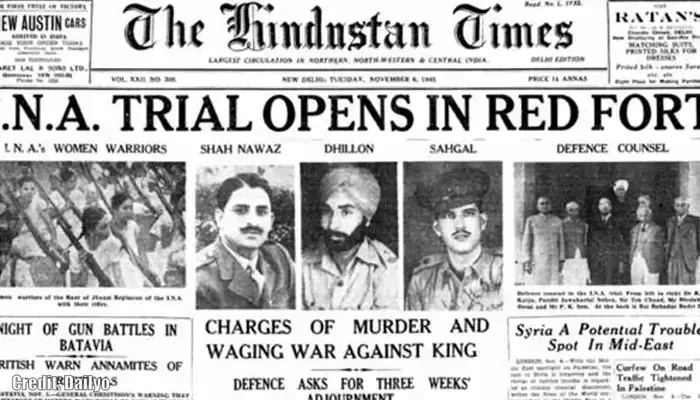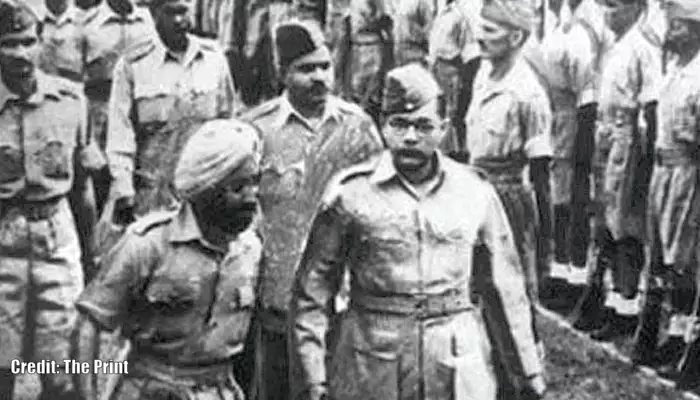
Three soldiers stood accused of treason. But the trial that was meant to silence a movement ended up amplifying India’s call for freedom
In the final years of British rule in India, a dramatic courtroom battle took place inside the Red Fort of Delhi—one that electrified a nation on the brink of independence. These were the INA Trials, a series of military court-martials conducted by the British Indian government between November 1945 and May 1946.
The accused were officers of the Indian National Army (INA)—a force formed by Subhas Chandra Bose during the Second World War with Japanese assistance. Bose’s vision was clear: to assemble an army of Indian prisoners of war to fight the British and free India through armed rebellion.
When the war ended in 1945 and the British emerged victorious, hundreds of INA soldiers were captured. The British decided to make an example of them, and thus, the trials at the Red Fort commenced, charging them with treason, murder, and torture.
The British aimed to reaffirm authority after World War II. The empire was exhausted, financially strained, and facing increasing unrest in its colonies. By putting INA officers on trial, they intended to re-establish fear and send a clear message: loyalty to the Crown was non-negotiable.
However, the trials ended up backfiring spectacularly.

The first and most renowned trial featured three INA officers:
Colonel Prem Kumar Sehgal (Hindu)
Colonel Gurbaksh Singh Dhillon (Sikh)
Major General Shah Nawaz Khan (Muslim)
Together, they represented India’s religious diversity, united under one cause: freedom. The British accused them of betraying the empire they had served, but to Indians, they were heroes fighting for a just cause.
The trial commenced in November 1945 and was held publicly to showcase British strength. However, it instead became a platform for nationalism. Prominent Indian lawyers such as Bhulabhai Desai, Tej Bahadur Sapru, and Jawaharlal Nehru stepped forward to defend the accused.

While legal arguments echoed within the Red Fort, streets across India roared with protests. The INA Trials ignited a fire nationwide, sparking three major waves of unrest:
Students and political activists marched through the streets to protest. The police opened fire, killing two. But the message was clear: India stood with the INA.
Protests against the sentencing of INA supporter Rashid Ali gripped northern India. Defying curfews and baton charges, students and workers demanded justice.
Over 1,100 ratings of the Royal Indian Navy mutinied in Bombay. They hoisted the tricolour and marched with civilians in a rare show of unity. This act of rebellion spread to naval bases across India and even overseas. British control over Indian troops was evidently crumbling.
Faced with a nationwide uprising and widespread support for the INA crossing religious, regional, and social lines, the British had no choice but to reduce the scope of the trials. Although the INA members were found guilty, their sentences were never executed.
By January 1947, most of the accused had been released. Shortly afterwards, Indian troops were withdrawn from overseas colonies, and the British dispatched a high-level Cabinet Mission to India to negotiate the transfer of power.
The INA Trials were never merely about three men or a single army. They evolved into a national referendum on colonial rule. For the first time, Indians from all walks of life—Congressmen, Communists, Muslims, Hindus, Sikhs, even film stars and civil servants—found a shared cause.